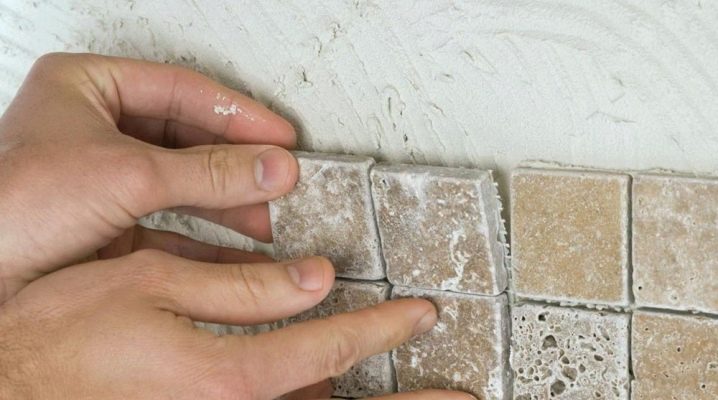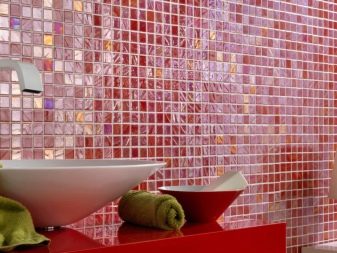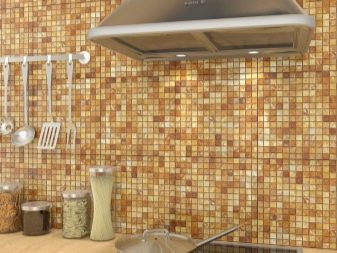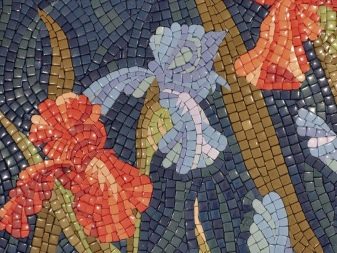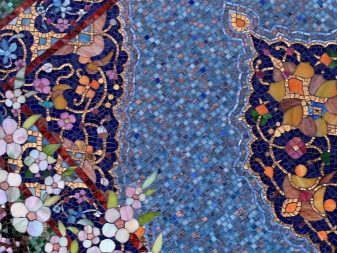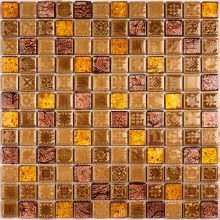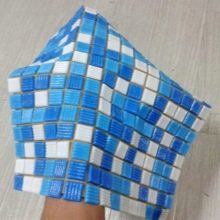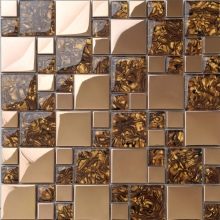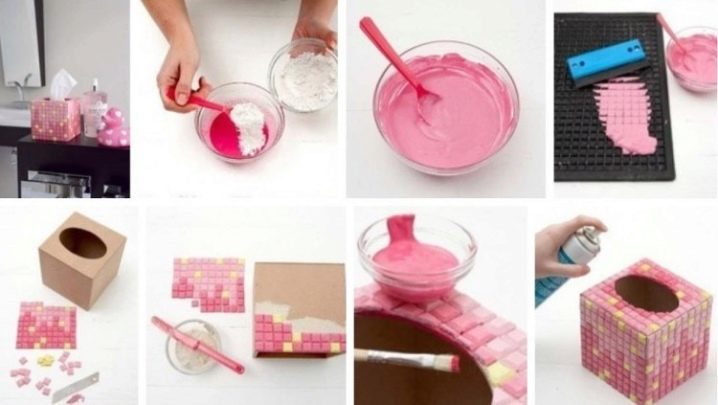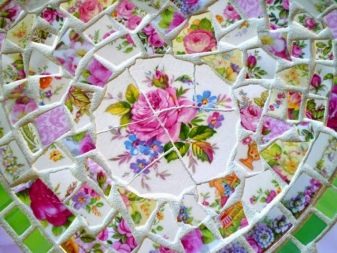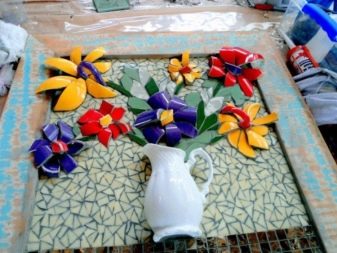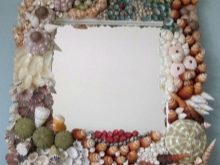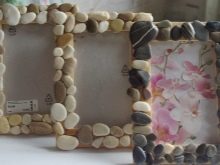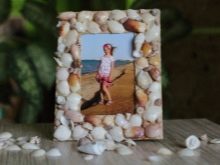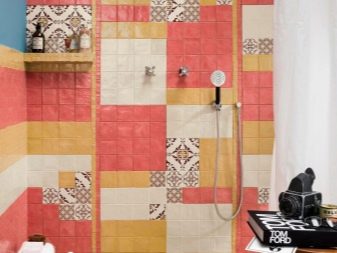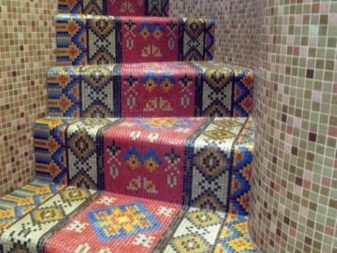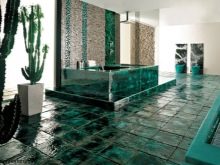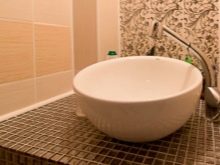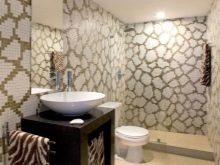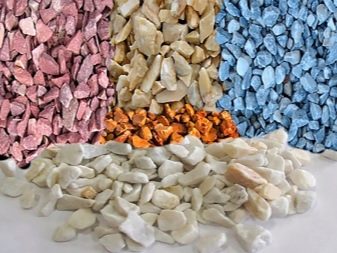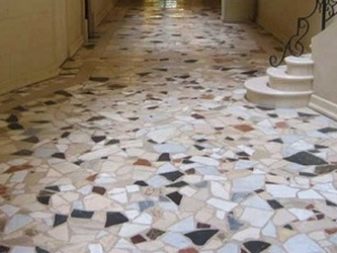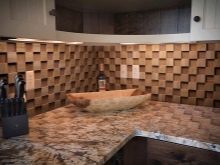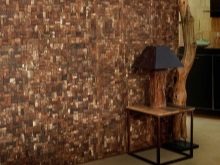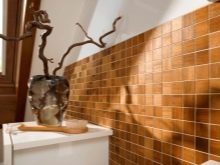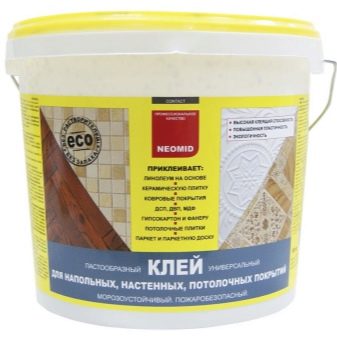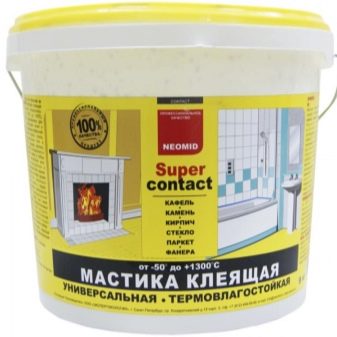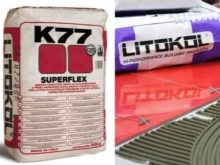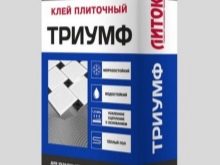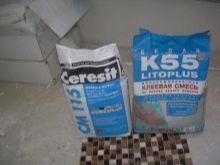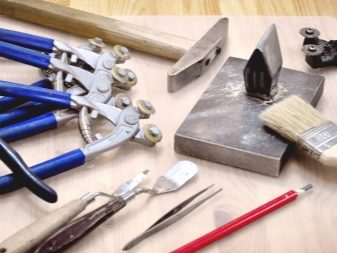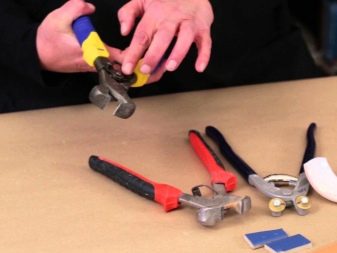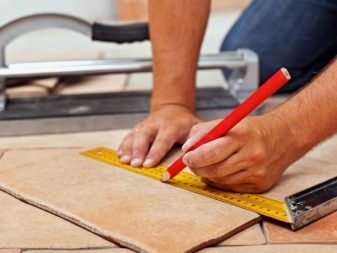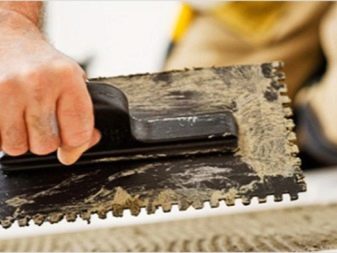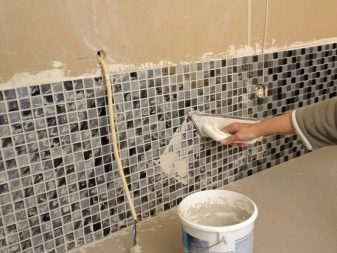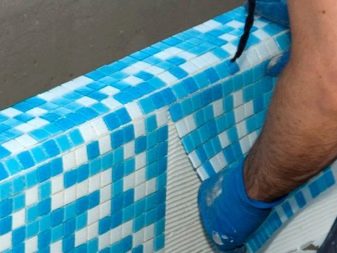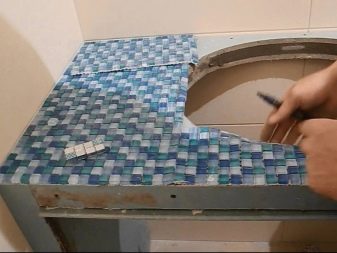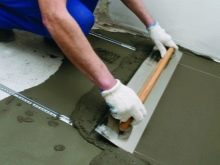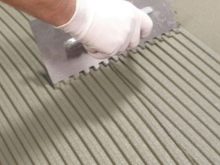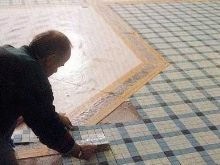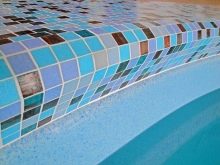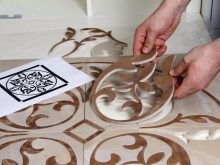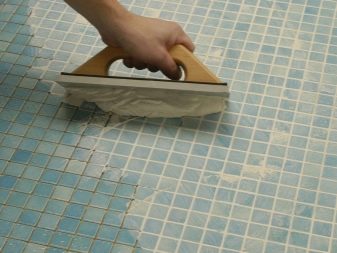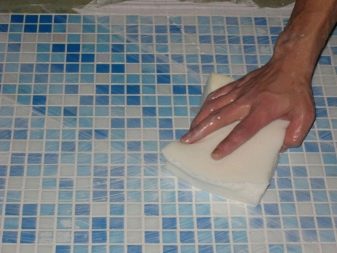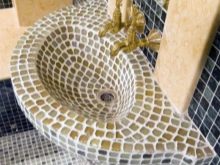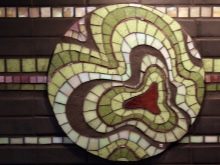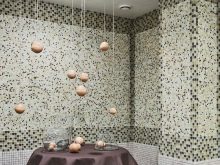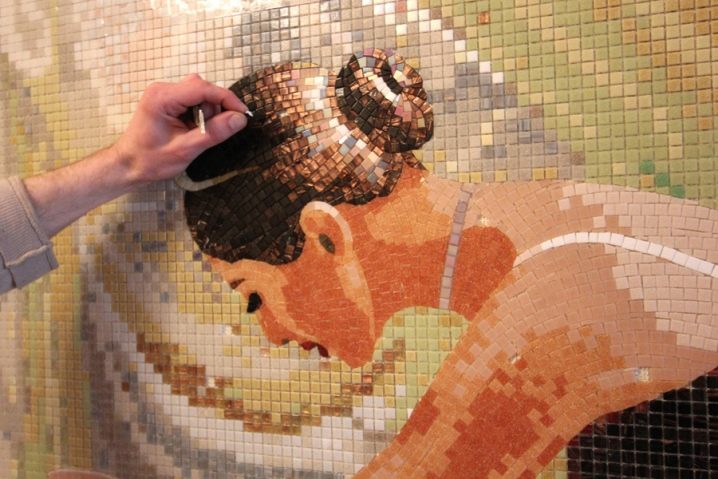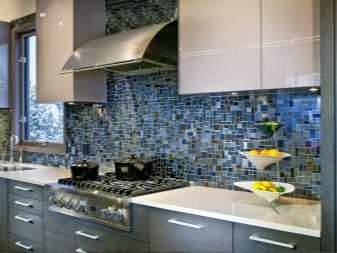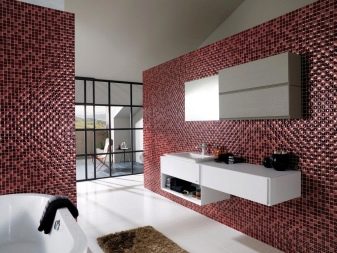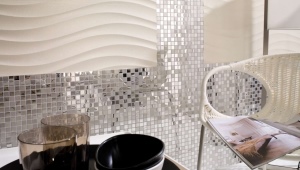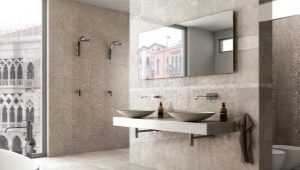Mosaic Laying: Installation Features
The house should be not only a cozy place for family recreation, meeting guests, but also have an original interior, which would be pleased with its beauty and uniqueness. Today there are many finishing materials with which you can create an unusual design.
Mosaic is particularly popular today. The mosaic decor gives the room a unique look and emphasizes the refined taste of homeowners. You can decorate the interior with the help of expensive natural materials, and choose products that mimic natural counterparts.
Mosaic features
Mosaic is a tile of small size, which has high decorative and operational properties. Mosaic composition can be revetted with all kinds of surfaces, as well as create beautiful drawings and patterns that require small elements.It looks interesting in a modern interior mural imitating painting depicting geometric figures and historical plots.
These tiles are best used for decorating small areas.: for windowsill, kitchen apron and countertops. You can put a mosaic in the bathroomscombining wall cladding with fragments of traditional tiles. In this case, it will play the role of a frame or border.
Manufacturers produce a mosaic of various raw materials, but most often for the manufacture of used stone, glass and ceramics. Decorative material can have both figured and square shape.
Separate attention deserves a tile of smalt, which is produced from sodium and potassium salts. Such a material is characterized by resistance to mechanical damage, and therefore does not wear out and does not lose color.
Smalt mosaic, as a rule, decorate the walls and flooring to design acquired an expensive look, finish complemented with particles of precious metals.
The tile is produced in various formats ranging from 8 × 8 mm to 50 × 50 mm. For ease of installation, the mosaic is sold on a flexible grid 300 × 300 mm in size, which can be on a fabric and paper basis.Such compositions are presented both in the form of complex and simple sets, that is, they consist of tiles of one or several shades.
On the glass and ceramic mosaic stick hard paper externally, which at the end of the finish is easily removed with a brush.
As for the tiles used for flooring, it is sold on the basis of wrapping or sack paper.
The main disadvantage of the mosaic is its high cost and time-consuming installation. But the interior can be originally designed with the help of pseudomazics, which is made from artificial materials and is not inferior in appearance to natural raw materials. It comes in a square shape and has dimensions of 10 × 10 mm, 20 × 20 mm. The tiles are made both monophonic and multicolored. Such a mosaic looks spectacular, and it is often chosen as decorative inserts.
Master class on making
Many masters make a mosaic with their own hands, for this is taken a rubber mat with square cells, wood glue, paints and plaster.
To prepare the mixture for the tile at home, perform the following steps: dilute 15 ml of wood glue in 55 ml of water,Acrylic paint is poured into the solution, then dry gypsum is poured and all are thoroughly mixed until a uniform consistency is formed. If the mixture is too thick, you can add a little water. The resulting solution is poured onto a mat and leveled with a rubber scraper, after which time is given for drying, usually it takes no more than 36 hours. The finished tile is removed from the cells and can be used for decorative decoration of any coating.
In addition, it is possible to make a mosaic of other materials that are available at hand. The most affordable option is its manufacture of broken tiles.which is easily pricked, has a rich selection of colors and textures.
The original solution will be a mosaic of broken dishes, it will look unusual and bright in the decor. Fine masterpieces can also be made from wood, eggshells, pebbles, glass and seashells.
If in the interior of the room there is an Art Nouveau style, then compositions suitable for him, laid out with a mosaic of CDs. Everyone in the house has plastic covers and collections of old badges, they should not be rushed to throw away - using the maximum imagination, they will turn into a beautiful decoration for the walls.At the same time, a hand made mosaic can be combined with various materials in the decor.
For example, the compositions framed by fragments of wood look unusual, and inside they are laid out with elements of stained glass and seashells.
The choice of material and glue
Today, the construction market is represented by a huge assortment of mosaics, which is distinguished not only by price, but also by size, color palette. Before you design the room, you need to choose the right material for decoration. Experts recommend to buy a mosaic of glass, as it is characterized by high quality and is resistant not only to moisture, but also chemical solutions.
This tile can be used for facing bathrooms, pools, showers and other rooms in which the temperature is constantly changing.
A marble marble mosaic mosaic is also a good option, the product withstands frost perfectly, has low water absorption, so it can be used to finish surfaces on the facades of houses and open balconies. Besides, marble tile has heat-resistant properties, thanks to which it is chosen for facing of stoves, fireplaces, chimneys and areas that are located near cooking surfaces or stoves.
If you need to decorate the rooms where there is constantly high humidity and contact with water, then it is advisable to give preference to the mosaic glued on a paper base.
It is easy to install and durable.
Wooden mosaic is most often chosen for the design of houses built of timber, although it can also be used to decorate individual fragments on the walls in the apartment. When buying wooden fragments you need to pay attention to the variety and breed of the tree from which they are made.
To increase the life of such compositions, they should additionally be covered with a protective layer.
An important issue when laying mosaics is the choice of glue, with which the tiles will be attached. For lining inside and outside the premises different mixtures are used, the type of glue depends on the material of the tile itself, its weight and size. Glass parts usually have a thickness of not more than 4 mm and they are placed vertically, so mixtures with a usual composition are suitable for fixing them.
For finishing surfaces in corridors, hallways and in kitchens, it is recommended to purchase glue that can withstand high temperatures with durable characteristics.
Cement glue is considered a universal option for laying mosaicIt comes out in white and creates an excellent background for elements made from a bright palette. In addition, the mixture has high adhesion and firmly attaches the material to the base. Cement glue is well suited for both mosaic and flooring, thanks to its elastic properties, it evenly fills the porous structure of the base and does not require prior leveling of the surface.
Another advantage of this mixture is that it quickly prepares and dries, and also allows for the installation to perform the adjustment.
Tools and surface preparation
Laying a mosaic, although it is considered a difficult process, but it is quite possible to do it yourself, without the help of experts. Before you start decorating, it is important to properly prepare the surface and stock up on appropriate tools.
Regardless of the type of mosaic, you will need to work:
- spatula with serrated and precise edge;
- rubber spatula;
- Malka;
- construction knife;
- drill with glue nozzle;
- plastic crosses;
- level;
- rag and sponge.
The base for the mosaic should be carefully prepared, as the material should be glued on a flat, dry and smooth surface. To do this, perform grinding, and in the case of lining pools laid an additional layer of waterproofing.
Surface preparation consists of two stages:
- First, markup of the working surface is made. In order to properly lay a mosaic, its sheets are laid out and measured, the results of measurements are applied across the entire width and length of the section, using a folding meter or profile. The result is a drawing in the form of a grid, on which sheets of material will be pasted. If the base has irregularities and defects, they are eliminated. It is necessary to remove the old finish, the corners between the walls should also be prepared, they put a reinforcing mesh and putty on it.
- Then the surface, if necessary, is primed and covered with a layer of glue with a spatula with teeth of 3.5 mm.
Installation Features
Unlike a usual tile the mosaic should be laid, observing certain rules.
Laying is carried out in a certain way:
- Glue is applied to the wall with a spatula, covering them with an area that will allow to place 3-4 tiles.Then the layer of the mixture is leveled, and it is carried out with a notched trowel to create grooves, after which the first sheet of the mosaic can be laid out.
- The second sheet is pasted, before it is laid out, it is necessary to separate the tiles of the first sheet with crosspieces. Similar work is done with other rows of the mosaic, moving upwards from bottom to top. During installation, it is important to control the distance between the seams, not forgetting to install the crosses.
- Removes excess glue, leaving room for grouting.
For the technology to be performed correctly, the wall or floor must be pre-aligned. Putting decorative trim should be drawn on the grid after the surface has dried from the plaster and primer.
In this way, the installation is done for the walls, and it is also suitable if you need to decorate a kitchen apron or shower tray. To lay out a mosaic of a shower, a pool or a ladder, a tile has to be cut, it should be done in such a way that the parts turn out without chipping. For this construction knife is cut along the seam, after which the tile is wiped and ready for laying. Glue after installation should dry wellThen you can start grouting using a special mixture. It is distributed over the entire surface of the mosaic and, after some time, is wiped with a wet cloth.
As for laying mosaic on the floor, then it is best for her to choose a material from such durable raw materials as porcelain stoneware, stone or marble. In this case, it is desirable to form fragments from larger pieces of tile.
First, a base is prepared, a cement screed is made and a waterproofing layer is laid, and then the following steps are performed:
- dilute the glue and apply it evenly over the entire surface with a notched trowel;
- Being guided by the preliminarily compiled dimensions, the first sheet of the mosaic lays down and is pressed tightly into the bead;
- the second sheet is set and the level of the rows is checked;
- at the end of the excess glue is removed, and grouting is done.
The most difficult is the installation of mosaics on the corners and rounded surfaces, this also applies to those cases when you need to decorate the walls where the sink stands. Since the mosaic tile has a unique design, it ideally fits on the base, having bends.Therefore, the installation process is not much different from facing the walls and floor. The only thing to consider is that with a strong bend at the tile, the distance between the elements may be broken. To avoid this, need to eliminate sharp bends and slightly align the shape of the surface.
In addition to decorating surfaces, mosaics can also beautifully decorate beautiful inserts, decorate a tray, mirror or arches. This type of installation is much easier, since the compositions are created by gluing individual particles.
Polishing and care tips
After installing the mosaic tile, irregularities and bumps are often formed, so they need to be fixed. To do this, apply grinding, which provides a beautiful surface gloss and smoothness. Grinding is suitable for both glass, ceramic and wooden mosaic.
To polish the tiles, take glass or sandpaper, you can also use small pieces of pumice. First, large defects are removed, then gently wipe everything with a dry cloth.
At the same time it is impossible to carry out polishing in this way for a mosaic of glass and other fragile materials, since its surface can be damaged. In this case, it is best to purchase special polishing mixtures.
Mosaic is considered to be an ideal finishing material that allows you to design a modern interior in an original way. But in order for such a decorative coating to last reliably for many years and not to lose its appeal, it is necessary to take care of it.
With careless handling and cleaning fragments can become dull and crack, after which the restoration can not be avoided.
To prevent this, it is enough to follow simple guidelines for operation:
- Do not use to clean the mosaic means, containing in its composition of acid and chemical elements. Acid adversely affects the structure of the tile, its outer coating is destroyed, and as a result cracks appear and color is lost.
- Wipe mosaic tiles should be soft fabrics that absorb moisture well and do not leave lint and stains. It is not allowed to use metal parts and hard sponges.
- In the event that scratches appear on the surface of the tile, then you should not get upset immediately, the damaged fragment can be easily restored with the help of available tools. In the house everyone has a colorless nail polish, it should be applied to the place of scratches and leave to dry completely.Paste on a helium basis will help to correct the situation, it is necessary to put it on the tile and, after drying, wipe well with a hard cloth.
- The mosaic should be cleaned regularly, as it will be difficult to remove the accumulation of dust and dirt later. To do this, first wipe it with a cloth moistened with soapy water, then wipe dry.
- It is not recommended to install a mosaic of fragile material in rooms where it can be subjected to mechanical stress.
- When installing tiles in the kitchen in the form of an apron, it is important to control that no fat drops fall on its surface; if this happens, the polluted places should be wiped immediately.
- In order for the glass mosaic in the bathroom not to lose its luster, it should be regularly rubbed with soft tissues, since it can lose its appeal due to the constant accumulation of condensate.
How to lay the mosaic, see the next video.
